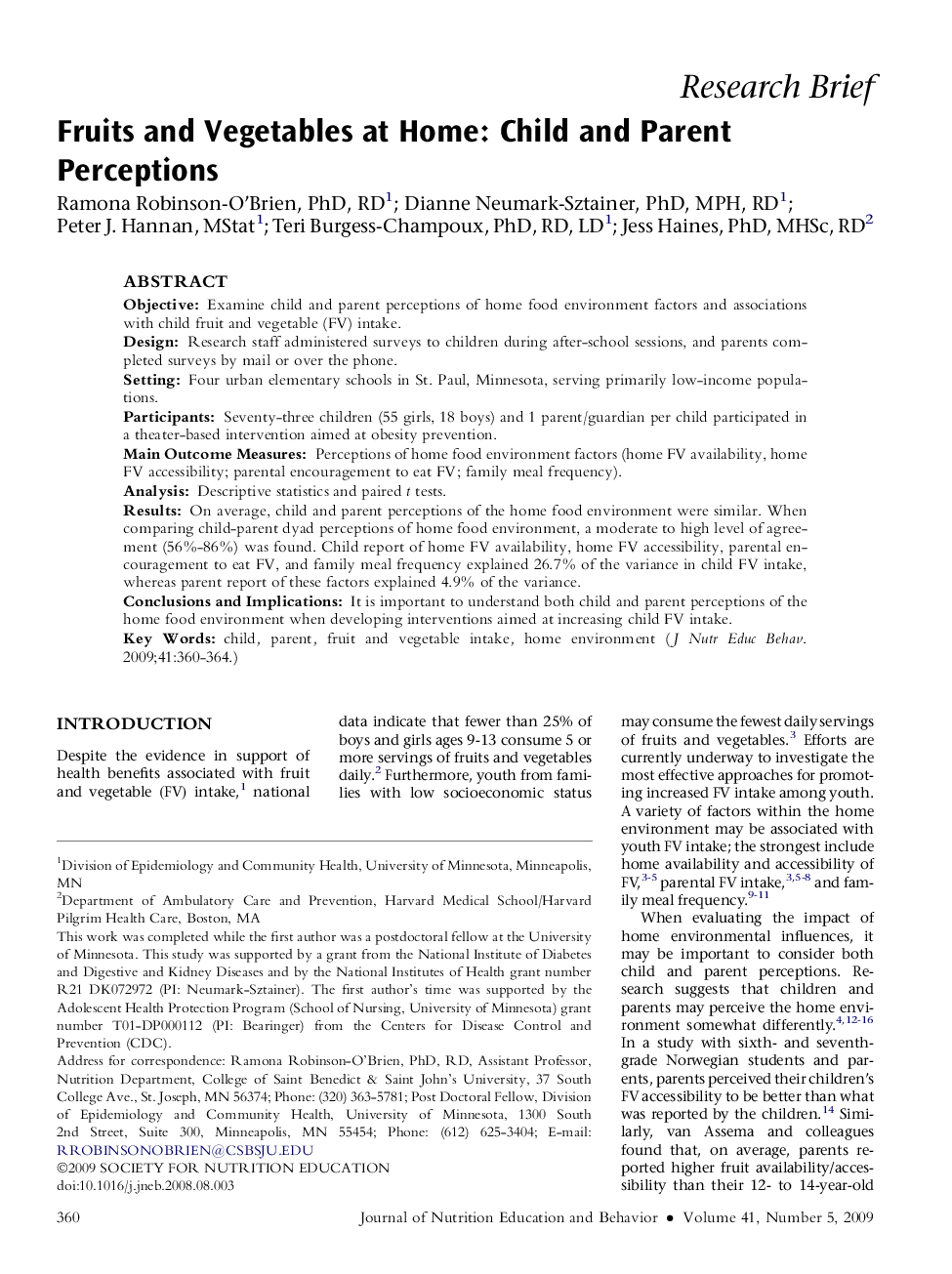| Article ID | Journal | Published Year | Pages | File Type |
|---|---|---|---|---|
| 363076 | Journal of Nutrition Education and Behavior | 2009 | 5 Pages |
ObjectiveExamine child and parent perceptions of home food environment factors and associations with child fruit and vegetable (FV) intake.DesignResearch staff administered surveys to children during after-school sessions, and parents completed surveys by mail or over the phone.SettingFour urban elementary schools in St. Paul, Minnesota, serving primarily low-income populations.ParticipantsSeventy-three children (55 girls, 18 boys) and 1 parent/guardian per child participated in a theater-based intervention aimed at obesity prevention.Main Outcome MeasuresPerceptions of home food environment factors (home FV availability, home FV accessibility; parental encouragement to eat FV; family meal frequency).AnalysisDescriptive statistics and paired t tests.ResultsOn average, child and parent perceptions of the home food environment were similar. When comparing child-parent dyad perceptions of home food environment, a moderate to high level of agreement (56%-86%) was found. Child report of home FV availability, home FV accessibility, parental encouragement to eat FV, and family meal frequency explained 26.7% of the variance in child FV intake, whereas parent report of these factors explained 4.9% of the variance.Conclusions and ImplicationsIt is important to understand both child and parent perceptions of the home food environment when developing interventions aimed at increasing child FV intake.
